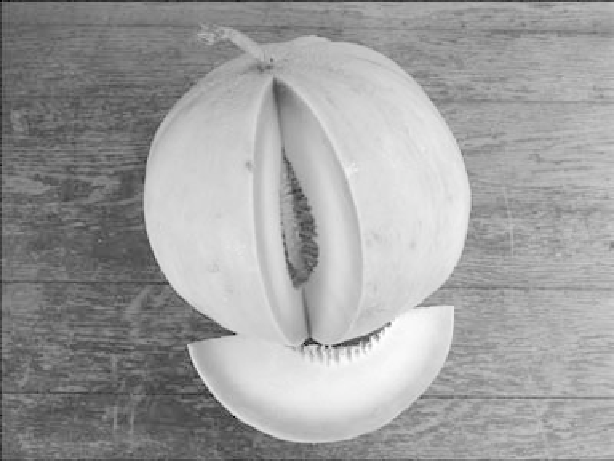Agriculture Reference
In-Depth Information
The Boule d'Or melon is an example of an heirloom melon that isn't available commercially, but is fabulous
in the home garden.
(Photo courtesy of Baker Creek Seeds)
You can sow melons directly into the prepared garden area, or start seedlings indoors three weeks
early. If you are growing seedlings indoors, keep the light source close to the seeds to discourage
leggy growth. You'll also want to be careful to harden off the seedlings so they don't get stressed
from the shock of cooler temperatures. Tradition dictates growing three plants per hill and spac-
ing them 6 feet apart, but I prefer to grow one plant per hill and space them about 3 feet apart.
Growing one plant per hill lessens the competition for water, which is always a premium in our area.
Heat stress will hurt the production of your melon vines, as well as alter the flavor of the melons.
The more leaves, and the healthier the leaves, the sweeter and more nutritious the fruit will be. If
the fruits will be smaller, you can grow them up a trellis. For larger melons put a board underneath
to keep them from resting directly on the ground.
Muskmelons and honeydew will slip easily off the vine when they are ripe. Watermelons will show
a browning of the curled tendril nearest the melon, although it's fun to “thump” them and impress
your friends with your watermelon mind-power. Some cultivars change colors when they are ripe,
making it even easier to tell.
Melons can be rather pest-prone with wilting diseases and powdery mildew topping the list. To
prevent aphids and cucumber beetles from spreading disease to your plants, try covering growing
vines with a row cover until the flowers appear and need to be fertilized. Squash vine borer can
also infect melons, so watch for the signs.













